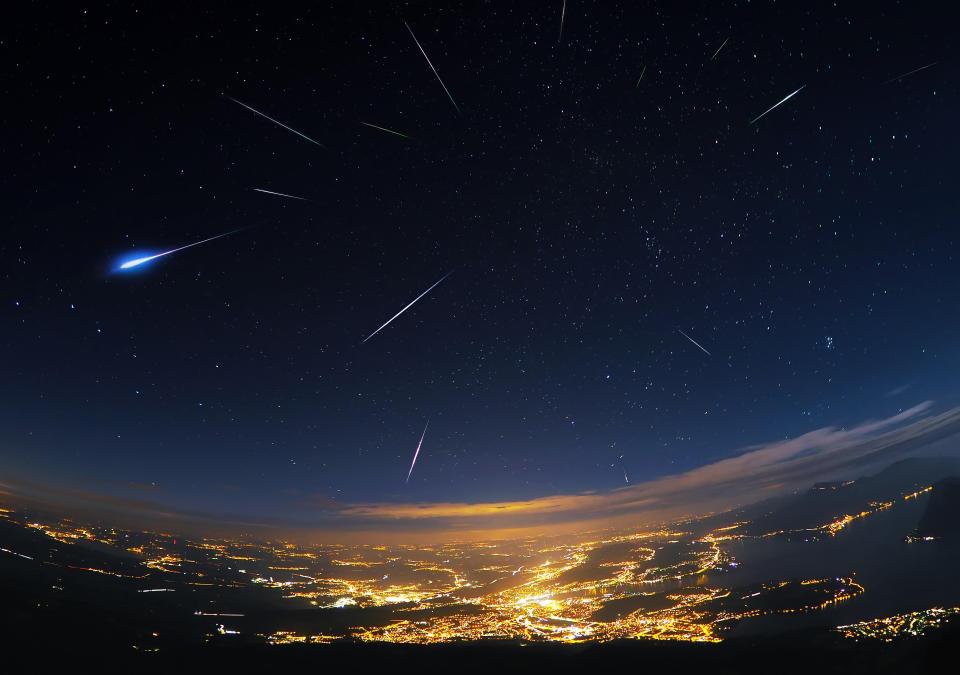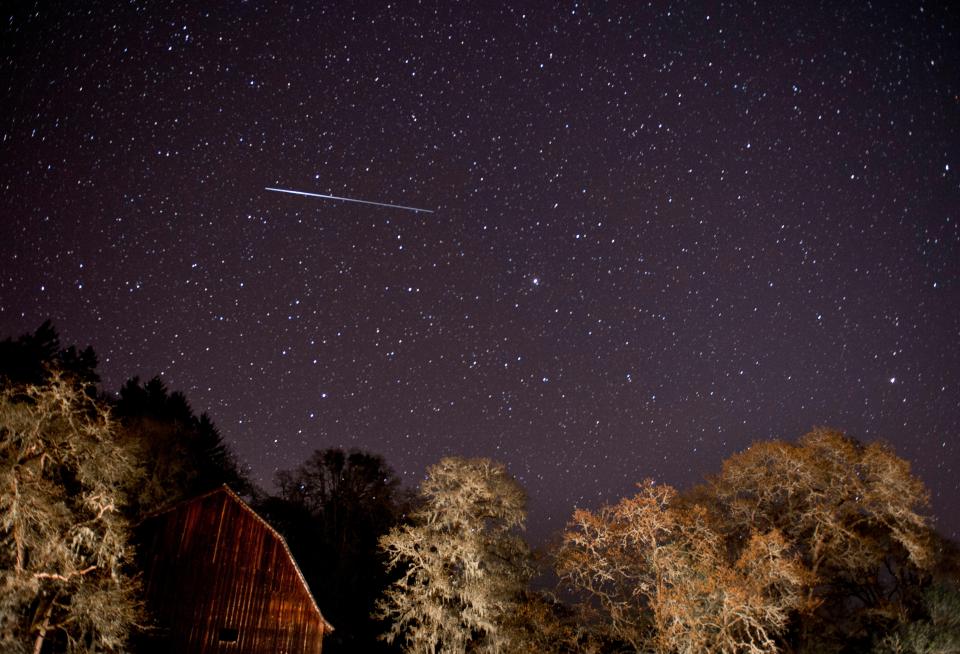THE dazzling Lyrid meteor shower is set to rain over Earth this Easter, with outbursts of up to 100 shooting stars per hour.
The shower will be active between 16 and 25 April – but there’s one day where stargazers can get the best view.
The Lyrid meteor shower happens every year around mid to late April.
According to Nasa, the first recorded Lyrid sighting happened in China around 2,700 years ago.
Stargazers will be able to catch 18 shooting stars per hour on average, which the chance of seeing up to 100 an hour during strong outbursts.
Lyrid meteors are bright and fast, with some being followed by light trains.
The peak – when the meteor shower is at its most active – falls on 22 April.
This year’s viewing conditions will be much better than the last.
In April 2024, stargazers had their view masked by the brightness of the Full Moon which fell around the meteor shower’s peak.
However, this year the peak falls a day or so after the Last Quarter Moon, when the lunar disk will only be 50% visible.
“On the night of 22nd-23rd April the Moon will be below the horizon until around 3am GMT, so won’t cause light pollution, making conditions ideal to observe the peak,” according to the Royal Greenwich Observatory.
The meteor shower is happening as a result of the dust left over from Comet Thatcher passing over Earth.
Comet Thatcher was last seen from Earth in 1861, but won’t make another appearance until 2276 thanks to its 415-year orbit of the Sun.
A second, even stronger meteor shower, known as the Eta Aquariids, is set to overlap with the Lyrids.
The Eta Aquariids begin on 19 April, with their maximum on 5 May.
This meteor show is caused by debris from Halley’s Comet.
Halley’s Comet is only visible from Earth once every 76 years or so.
Up to 40 shooting stars per hour will be visible during the Eta Aquariids peak.
Although it’s important to note this shower favours the Southern Hemisphere, and will appear low in the sky for northerly latitudes – such as the UK.
Nevertheless, it should still be possible to see the shower in the eastern sky during early predawn hours.
As long as the weather stays clear you should catch a glimpse.
What’s the difference between an asteroid, meteor and comet?
Here’s what you need to know, according to Nasa…
- Asteroid: An asteroid is a small rocky body that orbits the Sun. Most are found in the asteroid belt (between Mars and Jupiter) but they can be found anywhere (including in a path that can impact Earth)
- Meteoroid: When two asteroids hit each other, the small chunks that break off are called meteoroids
- Meteor: If a meteoroid enters the Earth’s atmosphere, it begins to vapourise and then becomes a meteor. On Earth, it’ll look like a streak of light in the sky, because the rock is burning up
- Meteorite: If a meteoroid doesn’t vapourise completely and survives the trip through Earth’s atmosphere, it can land on the Earth. At that point, it becomes a meteorite
- Comet: Like asteroids, a comet orbits the Sun. However rather than being made mostly of rock, a comet contains lots of ice and gas, which can result in amazing tails forming behind them (thanks to the ice and dust vaporizing)









